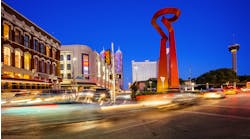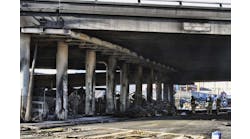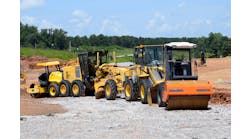In order to make needed improvements to Wyoming’s roads and bridges, the state would need to overcome a funding shortfall of $332 million each year—a total of $3.3 billion over the next decade, TRIP concluded in a report released on Feb. 15. This funding would allow for significant improvement in the condition of Wyoming's roads, highways and bridges and needed improvements that would modernize roadways, improve safety and enhance economic development opportunities.
At a time when one-fifth of Wyoming’s major roads are deteriorated, nearly one-quarter of the state’s bridges are in need of repair and traffic fatality rates are among the highest in the nation, road and bridge conditions are projected to worsen even further without additional funding. An additional $110 million would be needed each year—a total of $1.1 billion over the next decade—just to allow the state to maintain the transportation system in its current condition.
According to the TRIP report, “Future Mobility in Wyoming: Meeting the State’s Need for Safe and Efficient Mobility,” Wyoming’s transportation funding shortfall will prevent the state from moving forward with many needed improvements and will lead to worsening deterioration on the state’s roads and bridges.
The TRIP report finds that a total of 20% of major roads in the state were in poor condition in 2011. Under current funding, by 2022, the share of Wyoming’s roads rated in poor condition is expected to increase to 37%, and the miles of roads in poor condition will increase by 83%, from 1,296 miles to 2,366 miles. Driving on roads in need of repair currently costs each Wyoming motorist an average of $371 annually in extra vehicle operating costs—a total of $150 million statewide. Given projected levels of roadway deterioration under anticipated funding levels, extra vehicle operating costs will rise to $634 annually per motorist by 2022, a total of $256 million per year. Costs include accelerated vehicle depreciation, additional repair costs and increased fuel consumption and tire wear.
In addition to deteriorated road conditions, 14% of the state’s bridges were structurally deficient, and an additional 9% were functionally obsolete in 2011. Under current levels of funding in Wyoming, the share of the state’s bridges rated structurally deficient is expected to increase to 22% by 2022. The number of structurally deficient bridges in the state is expected to increase by 55% from 393 bridges to 608 bridges.
"Wyoming's roads and bridges are among the state's most important economic assets," said Dale Steenbergen, president and CEO of the Greater Cheyenne Chamber of Commerce. “In order to improve quality of life, safety and economic competitiveness, we must ensure that Wyoming's transportation system is adequately maintained and well-funded.”
Of the 25 roadway improvements identified in a 2011 TRIP report as being the most needed to support Wyoming’s economic development, only nine projects will be completed and four partially completed by 2022 under current funding levels. And while the Wyoming Department of Transportation (WYDOT) has identified a need for 409 lane-miles of additional roadway capacity to support the state’s economic development, based on current funding levels, the state will only be able to add 13 lane-miles of additional capacity by 2022.
Despite a significant drop in traffic fatalities from 2006 to 2010, Wyoming has the fourth highest traffic fatality rate in the nation, with nearly 800 people losing their lives on the state’s roads from 2006 to 2010. Wyoming’s traffic fatality rate of 1.62 fatalities per 100 million vehicle-miles of travel in 2010 is 47% higher than the national average of 1.10.
“Unless Wyoming is able to close its significant transportation funding gap, many additional needed projects will remain stranded on the drawing board because of insufficient funding,” said Will Wilkins, executive director of TRIP. “It is critical that Wyoming adequately fund its transportation system. Funding must be robust at the state and local level, and Congress must move forward on an immediate and long-term reauthorization of the federal surface transportation program. Thousands of jobs and the state’s economy are riding on it.”


